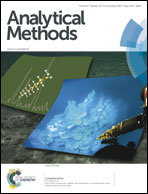A novel approach for encapsulating cells into monodisperse picolitre droplets actuated by microfluidic pulse inertia force
Abstract
Encapsulation of few cells into monodisperse picolitre droplets is an extremely critical step in the process of the droplet based single cell analysis. This paper presents a novel approach, not based on micro-fluidic chips fabricated by standard soft lithography technique, for encapsulating cells into droplets actuated by microfluidic pulse inertia force. The principle of the encapsulating process is to actuate a hollow PZT stack by a signal generator and a voltage amplification to provide an enough pulse inertia force for a tapered glass capillary and the cell suspension inside to eject droplets in mineral oil and a certain number of the cells will be randomly encapsulated in monodisperse picolitre droplets. The tapered glass capillary was fabricated by a glass heating process without complicated microfabrication technology. Therefore, it has the advantages of good chemical resistance, low friction, easy to manufacture and low cost. The minimum size of the spherical cell droplets that can be reached is 20 μm in diameter and about 4 picolitres in volume. The percentage of the droplets with single HL60 cell can reach 42% when the droplet size is 40 μm and the concentration of the cell suspension is 1 × 108 cells per milliliter since the alternate changed pulse inertia force can make the cells well dispersed in the tapered capillary. The percentage of viable cells that can be reached is 82% as determined by trypan blue staining, when the cell droplet size is 120 μm. The experiment results present a novel strategy for droplet-based single cell analysis.


 Please wait while we load your content...
Please wait while we load your content...